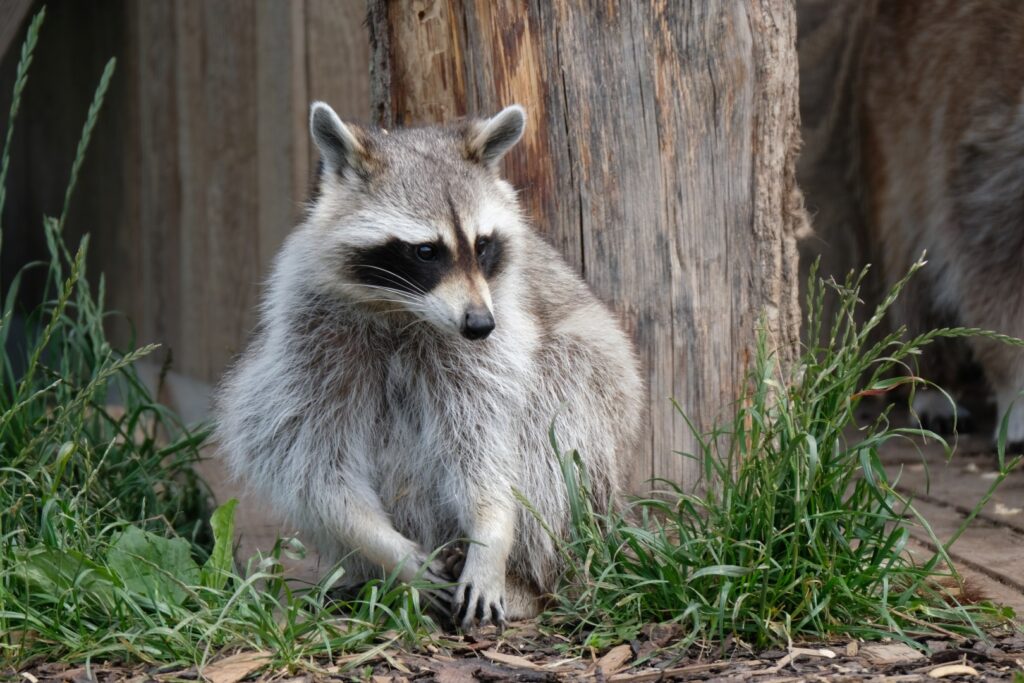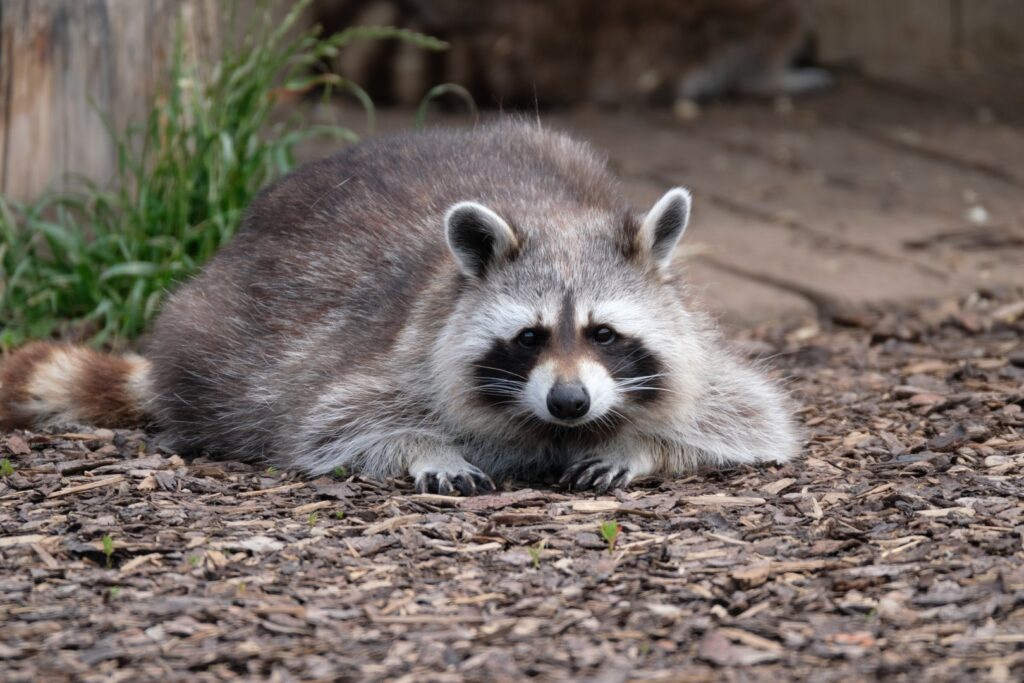Raccoon
What is a Raccoon?
The raccoon (Procyon lotor) is an omnivorous mammal from the Procyonidae family, known for its distinctive “mask” face and ringed tail. They are opportunistic feeders, eating everything from fruits and insects to human waste. Well-adapted to urban life, they can become nuisances when they enter attics, garbage bins, and gardens searching for food, posing risks of property damage and disease transmission like rabies.
How to Identify Raccoons?
Identifying a raccoon is usually easy due to its distinctive features, such as its robust body, a face marked by a unique black “mask,” and a bushy tail with black and gray rings. These mammals can vary significantly in size, weighing between 11 to 44 pounds as adults, making them quite imposing compared to other urban wildlife.
Signs of their presence extend beyond visual sightings; they include unique paw prints resembling human hands, raccoon poop found in strategic locations near their food sources or nests, and evidence of their passage, such as overturned garbage bins, garden damage, or structural damage to roofs and fences. These indicators are often the first alarms for homeowners, signaling a potential infestation and the need for prompt intervention to prevent further damage and health risks.

Additional Information on Raccoons
Pest Type
Omnivorous mammal known for its intelligence and dexterity, capable of opening secure containers to access food.
Appearance
Raccoons have a robust body covered in dense fur, a characteristic black facial mask contrasting with their gray fur, and a ringed tail with up to 10 dark bands.
Lifespan
Raccoons can live up to 5 years in the wild, but some captive individuals have reached older ages due to care and the absence of predators.
Habitat
They can adapt to various environments but prefer areas with access to water and shelter opportunities like hollow trees or house attics.
Diet
Their diet is highly varied, including fruits, nuts, small animals, and eggs. They are particularly attracted to human waste due to its easy access.
Life Cycle
Raccoons can reproduce once a year, giving birth to litters of varying sizes, allowing them to quickly adapt to their environment and colonize new territories.
Do I Have a Raccoon Problem?
If you notice damage to your garbage bins, noises in the attic at night, or raccoon poop in or around your property, it is time to consider intervention by Exterminapro. These signs indicate a potential raccoon infestation that requires professional attention.
Signs of a Raccoon Infestation
- Damage to Garbage Bins: Their intelligence and agility enable them to open various types of containers to access food, leaving behind a considerable mess.
- Raccoon Poop: These droppings are not only unpleasant but can also carry parasites and diseases. They are often located in “latrines” where raccoons return regularly.
- Structural Damage: Raccoons use their strong claws to create or enlarge openings in wooden structures, roofs, or sidings, seeking shelter or a nesting place for their young.


Risks Associated with Raccoons
While raccoons are attractive and curious, they pose significant public health threats due to their ability to transmit potentially fatal diseases such as rabies and leptospirosis. Their habitual scavenging in waste and intrusion into human living spaces increase the risk of contaminating water sources and contact surfaces, endangering the health of families and communities.
Additionally, in their search for food, they can damage properties and contaminate food supplies with pathogens. Facing these risks, it is crucial to call professionals like Exterminapro, who have the expertise to eliminate these pests safely and effectively, using environmentally friendly methods that comply with local regulations.
Treatments to Get Rid of Raccoons
Successful raccoon management involves a combination of trapping, exclusion, and environmental modifications to reduce the attractiveness of your property. Exterminapro uses proven methods to control raccoon populations while adhering to local wildlife regulations.
Preventing Raccoon Infestations
- Securing Waste: Choosing garbage bins with locks or securing mechanisms can deter raccoons from scavenging for food.
- Protecting Entrances: Regularly inspecting your home to identify and repair potential entry points can prevent raccoons from gaining access inside.
- Eliminating Food Sources: Ensuring pet food is stored indoors and gardens are protected with fences or nets can reduce your property’s appeal.
Types of Treatments to Control Raccoons
- Humane Trapping: Specially designed traps capture live raccoons, allowing for humane and controlled management in compliance with local wildlife laws.
- Repellents and Deterrents: Certain natural repellents or ultrasonic devices can create an inhospitable environment for raccoons, encouraging them to move elsewhere.
- Exclusion and Habitat Modification: Making feeding and shelter areas inaccessible or less attractive can effectively reduce raccoon presence without causing harm.
How to Permanently Eradicate Raccoons?
For a long-lasting solution, Exterminapro combines expertise and eco-friendly approaches to eliminate raccoons and prevent their return. Our specialists are equipped to assess and treat your raccoon problem effectively, ensuring peace and safety.
Intervention Process
How Much Does It Cost?
Get a Free Estimate
The cost of raccoon extermination can vary based on the extent of the infestation and the chosen methods. Exterminapro offers a free assessment to provide an accurate estimate and customized solutions. Contact us to secure your space and live without the threat of raccoons.

